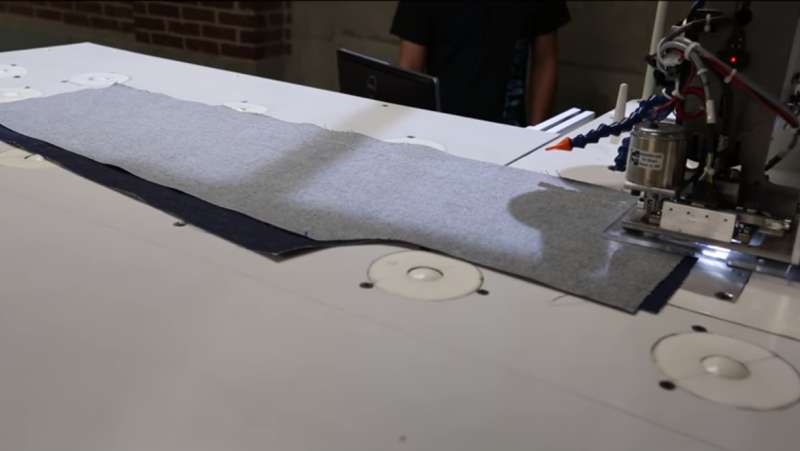August 26, 2017 weblog
Creating garments with Sewbot: Watch for changes in the business of clothing

(Tech Xplore)—Robotics and high speed computer vision are going to change the apparel industry and it is already evident that change is under way. SoftWear Automation, an Atlanta-based robotic sewing company, is in the frontline of automation change.
Their technology is going to be seen realtime in worklines for t-shirts. Meet Sewbot, their robot, which will be seen in an Arkansas factory when it opens its doors next year with production lines capable of making around 1.2 million T-shirts a year.
The Chinese clothing manufacturer Tianyuan Garments Company is to introduce the Sewbots in 2018, reports said.
Fast Company had more:
"In Little Rock, Arkansas, the new Tianyuan factory will eventually provide 400 jobs. While the robots are fully autonomous, three to five people will be employed to work with each production line; others will work in logistics and other parts of the factory."
In brief, the factory will be filled with fully autonomous robots and their human supervisors.
This is seen as a sign of a potential shift in the apparel industry.
Sewbots use a combination of patented high-speed computer vision and lightweight robotics, said Innovation in Textiles. This can steer fabric "to and through the needle with greater speed and accuracy than a human," said the report. One benefit is a decrease in the overall defect rate.
Ivana Gazibara in Futures Centre last year reported the company had "developed a robot which has a half-a-millimetre sewing accuracy, meaning it can do things well above and beyond human capability, like sew a perfect circle. The innovation is in the cameras, which help the sewing robot track where the threads are at every moment and take corrective action if the fabric stretches or shifts."
As for the recent news about the Arkansas factory, Innovation in Textiles talked about output when Tianyuan uses their Sewbots. The projected output is over 1 million shirts per year, said Palaniswamy Rajan, CEO of SoftWear Automation.
Commenting on the industry in Fast Company: "People buy 11 billion T-shirts a year," said Rajan. "That's an interesting market where automation makes sense, where our robots make sense, because our robots produce a very high volume of product."
SewBot was developed at Georgia Tech and the company had a number of years of research and development working on projects.
"By 2015, the company was selling a more basic version that could make bath mats and towels," wrote Adele Peters in Fast Company. The newest version is to be deployed in the Little Rock factory.
After T-shirts, they anticipate involvement with other types of clothing. "We are expecting to move deeper into activewear while also looking at other areas of the industry from casual pieces like jeans and polos to basic dresses and classic dress shirts," said Rajan, according to Innovation in Textiles .
An easy complaint over this might be that the technology spells bad things for workers displacement. Rajan has another viewpoint.
"Workers might shift into doing more artisanal work, at higher wages," he said in Fast Company.
Also, Rajan said in Fashion for Good that "Our Sewbots bring manufacturing closer to the consumer, reducing shipping, inventory and carbon dioxide." Rajan said the current apparel supply chain was "one of the largest polluters second to oil and is only held in place through the exploitation of low-cost labour."
Yet, with all the potential of technology to bring industry change, Rajan in Fast Company said he believed some higher-end clothing will always be made by humans. "We'd never do a bridal dress."
More information: softwearautomation.com/products/
© 2017 Tech Xplore

















